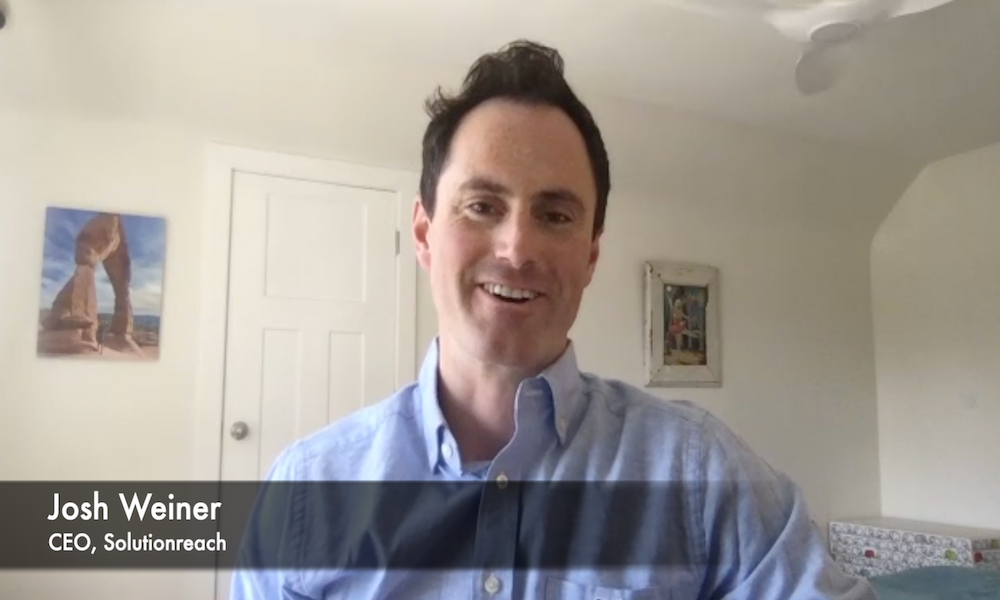EMR Shopping?
Get tips for picking the right EMR
Kirk Voelker, MD, has already spent over a year trying to find an electronic medical record (EMR) for his practice. He became so stymied by the process that he started a Web site (www.elmr.com) to help his practice, Lung Associates of Sarasota in Florida, and others find the right system.
Voelker isn't alone in feeling frustrated. As more physicians consider EMRs, more are confused by the seemingly endless array of choices, none of which seem, at first glance, to be terribly different from the others.
In fact, shopping for an EMR can be like shopping for a good merlot, as David Bond sees it. "You're looking at a shelf with 500 merlots. You don't know whether to buy the one on sale or the one with the Wine Spectator listing," says Bond, executive vice president of the ambulatory division of A4 Health Systems, in Cary, N.C.
"I don't know of anybody who has found a quick path" to picking an EMR, confirms Jeff Blair, vice president of the Medical Records Institute, a Newton, Mass.-based organization that promotes the development and acceptance of electronic healthcare.
In short, picking out an EMR is not going to be as quick and simple as you might have hoped. But there are some methods for easing the process.
Know what you need
The first and most crucial step, before you look at a single brochure, is to define internally what the system needs to do. What made you decide to look into an EMR to begin with? Many physicians simply feel they want to get rid of paper records, but that explanation just scratches the surface. What, really, is so bad about paper? Is it that a physician can't find a chart when he needs it? That it's hard to mine paper charts to find all diabetics who need a foot exam? Be very clear about your objectives.
Often, physicians working within a group will have different motivations in mind. Any product search will fail unless there is some consensus on what you hope to accomplish. "All physicians are focused on 'what will this do for me?'" says Blair, but how they define what they want an EMR to do for them can vary.
For example, some physicians want software that will make documentation easier. "Unless it helps them perform their data capture responsibilities faster, they may not be interested. Other physicians with a lot of repeat visits may find value ... in being able to quickly look over lab tests, so their priority is more on retrieval of information," says Blair.
Still others need to share data with physician colleagues or are focused on quality of care issues. Physicians in a multispecialty group may need to incorporate radiology images or charts of an eye; others will just need a way to chart office visits. "These priorities compete with each other and you almost never find a group where they all share the same priority," Blair warns.
Voelker's experience is typical and matches Blair's description. "It's a difficult decision. For us, we have not found anything that works well for the group as a whole," Voelker says. For example, he wants to be able to send notes to referring physicians but finds the template-driven notes created by most EMRs too obviously machine-built.
"The perception of the standard of care I'm giving is decreased," he worries. It's only because he knows sending high-quality notes is important to him that Voelker is able to recognize the drawbacks of templates - at least for him. He finds it better to have no system at all than to invest in a system whose output would embarrass him.
As Voelker is doing, a good first step is to get as clear a picture as possible of the sort of functionality you need to fit the culture and goals of your practice.
Don't buy for brand
Setting a group goal will also help you avoid a common mistake in EMR shopping - just buying what everyone else is using. It's tempting to shop for an EMR the same way one might shop for a dishwasher or a lawn mower - look for the market leader or famous brand name and purchase that product.
But that's a nearly impossible approach when it comes to digital records. Quite simply, there isn't a market leader. "There is no dominant player yet," according to Tom Handler, a radiologist who is working as a healthcare market analyst for the Gartner Group, a consulting firm headquartered in Stamford, Conn.
That's partly because so few physicians actually have already invested in the systems. Handler estimates that fewer than 3 percent of physicians have an EMR. Even a leading vendor like A4 has only 250 practices using its system, says Bond.
Making matters more confusing, the healthcare technology market is consolidating. According to Vincent Hudson, president of market research firm Jewson Enterprises, there were 1,443 practice management and EMR vendors in 1999. Now, there are only 869. Today's leader may be tomorrow's acquisition or bankruptcy.
Instead of trying to pick a popular winner at this early stage of the contest, define - clearly - what your practice needs from an EMR, then look for the product that best meets those needs.
Check speed of entry
If you still have trouble narrowing the field, look for the fastest charting program. "Every system out there takes longer to create a chart electronically than to dictate it," warns John Cadwell, MD, director of engineering for Cadwell Industries, creators of the QuickMed EMR. Handler agrees, "The systems all take longer to use than pen and paper."
That's a problem because, for physicians, time is money. An extra 15 minutes a day spent charting is one less patient and one less charge a day. "If it takes you more than a minute longer to dictate a note, you are going to lose money," Voelker warns, adding that vendor reps will "tell you they know a doc who can [use their product to] do 30 patients a day, no problem. Well, my response is that there are also people who can paint with their feet." The only way to know for sure is to test it.
Because some programs take longer to learn than others, it's difficult to check the charting speed by timing yourself. You may get faster as you become more familiar with the product. But you can count clicks, Cadwell advises. "Count how many times you need to click or use the keyboard to create one particular note. Forty clicks will take less time than 80."
Ask the right questions
Another helpful technique is to ask colleagues about the systems they have chosen. Most vendors will happily provide the names of clients for you to chat with. However you get your contacts, here are some cagey questions to ask:
o Is the person you talk with using the same version and the same modules of the program that you plan to use - especially those that drew you to the product? If the client has the same modules, are they actually using them regularly and with success? Similarly, make sure the product a vendor shows you in demo is the same one they would actually install. Some are showing product versions that are not yet being produced for sale, Bond cautions.
o How many physicians in your contact's practice are using the software? Of those, how many use it at the point of care instead of batching chart work for the end of the day? Both questions will elucidate how user-friendly the program really is.
o Ask potential vendors how many licenses they have sold in the past six months and, of those, how many are live? That indicates whether a company can deliver on time. Implementation for some companies takes as long as 200 days, if more than one or two physicians in a practice are using their product, Bond adds.
o Is the vendor financially stable? The medical software industry is shifting quickly. Make sure anyone you contract with today will be around tomorrow. "A company's finances are often under-considered," says Jerry Shultz, vice president of sales and marketing for Tustin, Calif.-based NextGen. Physicians shouldn't draw conclusions about stability based on appearances. Lots of companies go public and spend their cash on big trade show booths and fancy brochures, leaving very little in the bank for longevity or product development.
Handler adds that practices should avoid buying software from local, entrepreneurial physicians who have created their own systems. Such software is unlikely to integrate well with practice management software or to be around for very long.
No matter what questions you ask, settling on an EMR won't be easy. Some physicians take as long as six months to make a decision. Others, like Voelker, are still looking after 12 months. "There is not a sample road map or path to follow," Blair agrees, but clearly defining the business and clinical objectives will provide a shortcut no matter where the road leads.
Pamela L. Moore, senior editor of practice management for Physicians Practice, can be reached at pmoore@physicianspractice.com.
This article originally appeared in the September/October 2002 issue of Physicians Practice.
Cybersecurity breach reports low during the pandemic
September 7th 2020A new report from CI Security suggests cybersecurity breaches were lower during healthcare's rapid transition to virtual care throughout the pandemic. In this episode of Perspectives, we look at why this might be and other aspects of their report with CI Security's Healthcare Executive Strategist, Drex DeFord.







